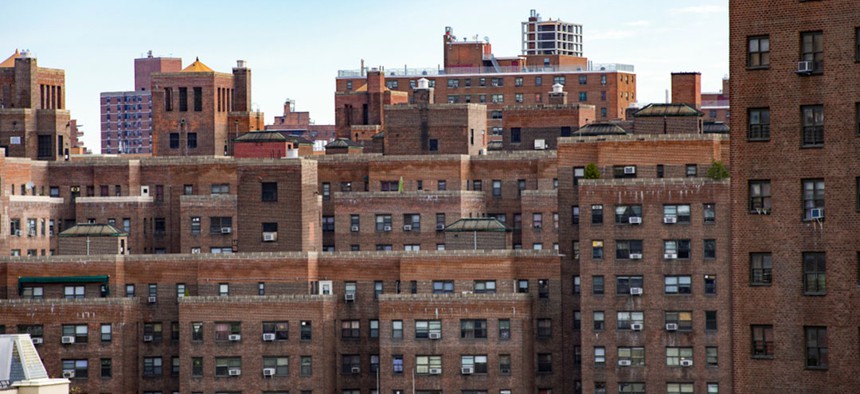A new online tool shows how different types of housing are distributed throughout New York City, offering glimpses into where changes in local, state and federal housing policy would have the greatest effects.
The nonprofit Community Service Society created “The Geography – and New Politics – of Housing in New York City” to highlight through interactive maps how electoral districts at the city, state and federal levels intersect with different concentrations of publicly supported housing. With Democrats now in control of the both houses of the state Legislature and the U.S. House of Representatives following the 2018 elections, the maps also can suggest which elected officials might want to take leading roles in legislative efforts next year to renew, and possibly expand, rent control and stabilization laws for nearly a million households in New York City or federal housing programs such as Section 8 vouchers. At the very least, elected officials, tenant groups and other stakeholders can now see how different types of residents fit into different areas of the city.
“District lines for our legislative districts are kind of crazy,” said Tom Waters, a policy analyst at the Community Service Society. “It might not be obvious who would end up with the most units of each kind.”
Data for seven types of housing are included in the tool: public housing, rent-regulated units, family housing supported by the federal Department of Housing and Urban Development, senior housing supported by HUD, middle-class housing supervised by the city Mitchell-Lama program, unregulated apartments, and owner-occupied housing. This data is then displayed on maps delineated by district boundaries for Congress, the New York City Council, the state Assembly and the state Senate.
The 2017 New York City Housing and Vacancy Survey provided the numbers of owner-occupied, rent-regulated and unregulated rental housing. A Community Service Society database then provided estimates of the number of public housing, Mitchell-Lama rentals and housing subsidized by HUD.
A few themes emerge from looking at the maps, according to Waters. Areas with high concentrations of publicly-supported housing run through Upper Manhattan, the Bronx and Central Brooklyn, areas where elected leaders might provide a “natural source of leadership,” on housing policy, according to Waters. Senior housing supported by HUD subsidies has concentrations in Lower Manhattan, but family housing supported by a similar program does not. NYCHA housing is distributed relatively widely throughout the city, but large areas of Queens, Brooklyn and Staten Island have few rent-regulated apartments.
While the general public can learn a lot from the maps, the real aim of the new tool is to inform elected leaders and neighborhood groups what share they have of publicly-supported housing units citywide. While some might know that they have significant constituencies of one group or another, some might be surprised to compare their assumptions with the realities illustrated by the maps, according to Waters.
Some might assume that North Brooklyn has a lot of rent-regulated housing because state Sen.-elect Julia Salazar ran heavily on the importance of protecting rent regulation. But her district has a smaller concentration of rent-regulated apartments compared to adjacent districts like District 15, which is represented by state Sen. Joseph Addabbo, Jr. That does not mean however, that concentrations of one type of housing are not mutually exclusive. A district can a wide range of housing types. State Sen. Liz Krueger’s district on the East Side of Manhattan, for example, has many owner-occupied units and a cluster of rent-regulated apartments.
The overall purpose of this project by the Community Service Society is to show the diversity of housing types and their distributions throughout the city so that elected officials can better understand who they represent and the full diversity of housing in their districts. “You might picture your constituents as those homeowners,” Waters said. “(But) you might not be aware of the rent regulated constituents.”


